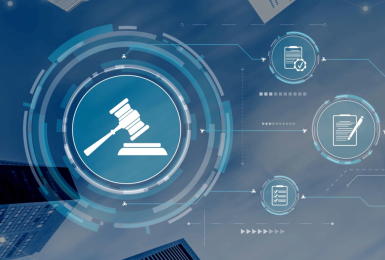Data-driven decision-making continues to anchor the healthcare industry, allowing providers to offer more personalized care to patients and giving healthcare administrators the ability to maximize resources as well as lower healthcare costs.
However, as healthcare organizations continue to harvest personal data and use it to improve operations as a whole, there is an increased emphasis on healthcare data security. Understanding the role of data security in healthcare allows you to develop improved protocols for collecting, storing, and utilizing patient data, including medical records, and other sensitive information.
What Is Healthcare Data Security?
Healthcare data security refers to the measures taken to protect the patient records, health information, and financial information collected and stored as part of a healthcare database. The healthcare industry continues to rely heavily on data-driven insights to provide patients with better care, streamline operations at healthcare facilities, and improve patient outcomes, emphasizing the importance of effective healthcare data security measures.
The Importance of Data Security in Healthcare
According to the American Hospital Association, the healthcare industry is at a particularly high risk of cyberattacks, which continue to grow increasingly complex and targeted. Due to the high volume of sensitive information and patient data stored on healthcare databases, these organizations are particularly appealing to hackers who want to access a lot of information in a short amount of time. Healthcare data breaches not only compromise the privacy and security of patient data, but these attacks can also bring healthcare organizations to a standstill, as nearly all operations are connected within a network.
Recognizing the impact of healthcare data breaches, it's clear that data security in healthcare is essential to providing patients with high-quality, accessible care in the modern era.
HIPAA Compliance Considerations
The Health Insurance Portability and Accountability Act (HIPAA) was signed into law in 1996 to protect patient privacy and ensure that healthcare organizations took measures to protect all data stored or transferred by a healthcare organization. As the healthcare industry has evolved over time and become more dependent on technology, rules have been implemented to ensure that healthcare organizations remain in compliance with all HIPAA regulations.
The U.S. Department of Health and Human Services states that the HIPAA Security Rule established a set of national standards that healthcare organizations must adhere to protect all healthcare data stored and transferred in electronic form. All healthcare organizations must enact data protection measures that align with the standards outlined in the HIPAA Security Rule.
Common Threats to Healthcare Data Security
Healthcare data breaches are becoming alarmingly common, requiring healthcare analytics specialists to be aware of emerging cybersecurity trends and the best practices required to protect healthcare data. Healthcare data breaches were first published in 2009, and since that time, more than 5,800 healthcare data breaches have been reported. These data breaches have the potential to halt operations at healthcare organizations. They also leave patients vulnerable to identity theft and other ramifications.
Knowing the most common threats to healthcare data security can help professionals develop the best practices needed to prevent cyberattacks:
Cyberattacks and Ransomware
The HIPAA Journal notes that cyberattacks and ransomware are two of the most common threats to data security in healthcare. In 2023, more than 133 million patient records were exposed over the course of more than 725 cyberattacks throughout the country. Not only was this the highest number of attacks in a single year, but it was also the highest number of patient records exposed in a year, making 2023 an alarming, record-breaking year in healthcare data security.
Insider Threats
Insider threats to healthcare data security are defined by Fisher Philipps as healthcare data breaches caused by internal employees or third-party vendors who have access to the patient information and sensitive data stored on the organization's servers. Many people are surprised to find out that insider threats pose such a danger to healthcare organizations. Insider threats can be broken down into two categories:
- Malicious insider threats — These are intentional data breaches caused by an internal employee or third-party vendor actively working to harm the organization. For example, a healthcare employee who has access to patient data about a high-profile patient may use that information to extort money.
- Unintentional insider threats — These are data breaches that occur unintentionally, often because of a careless mistake. For instance, a telehealth worker may be taking a videoconferencing call with a patient in the proximity of another individual, inadvertently compromising the private health information of the patient on the call.
Data Breaches
Data breaches are defined as any instance in which a healthcare database is accessed by an unauthorized party, whether it's an internal employee who should not have access to the database or a hacker launching a cyberattack. Data breaches compromise the privacy and security of patient data, leaving both patients and healthcare organizations vulnerable.
Device and Network Vulnerabilities
The healthcare industry continues to become more dependent on medical devices that store and transmit patient data, highlighting the importance of creating and maintaining a secure network. Unfortunately, device and network vulnerabilities are one of the leading causes of data breaches in the healthcare sector. It's possible that up to 385 million patient records were exposed during data breaches, many of which were accessed as a result of device vulnerabilities. As the use of Internet of Things (IoT) devices becomes more common in the healthcare industry, it's essential that all healthcare workers recognize the importance of completing security updates and properly disposing of devices at the end of their lifespan.
Cloud Security Risks
Cloud-based platforms allow patients and providers to access medical records and important patient information on the go, but cloud security risks can leave healthcare organizations vulnerable to cyberattacks and data breaches. If the right cloud security measures are not put in place, it is possible that the data stored on those cloud-based servers can be accessed by individuals or organizations with malicious intentions.
Best Practices for Securing Healthcare Data
Healthcare providers are expected to continue to rely on data-driven insights to streamline operations, improve patient care, and provide patients with the best possible outcomes. As the risk of data breaches becomes more common and more complex, it's never been more important to be aware of the best practices for securing healthcare data.
These are some of the best practices for securing healthcare data, including patient records and other sensitive information:
Implementing Strong Access Controls
By creating and implementing strong access controls, a healthcare organization can ensure that only specific individuals have access to relevant healthcare data. One of the best ways to implement strong access controls is to create a role-based access control system (RBAC). The best RBAC practices ensure that employees in a healthcare organization only have access to the patient data that they need to perform their job responsibilities. For example, a nurse may have access to a patient's medical records, but a scheduler at a healthcare clinic would not have access to that information.
Data Encryption
One of the best ways to protect patient data and ensure compliance with all HIPAA privacy laws is to implement strong data encryption throughout your healthcare database. Data encryption is important when transmitting data between healthcare devices or networks, because it offers an additional protective barrier between private data and those who may want to breach that data.
Regular Security Audits and Vulnerability Assessments
Security audits and vulnerability assessments should be performed on a regular basis to identify any vulnerabilities that may exist within a healthcare network or on a particular medical device. Using a proactive approach can help reduce the risk of data breaches in the future and can help you thwart an attack before it happens.
In addition to performing these audits and assessments regularly, you also should make sure to perform regular updates and promptly install security patches. While it's easy to ignore these sometimes-tedious tasks, out-of-date security can leave medical devices vulnerable to attack.
Using Data Loss Prevention (DLP) Solutions
Data Loss Prevention Solutions are services that healthcare organizations can invest in to protect patient data and prevent data breaches. DLP solutions can:
- Identify both structured and unstructured data that needs to be protected within a system.
- Alert organizations when data is at risk.
- Identify and remediate threats to minimize impact on the organization and reduce the risk of compromising patient records.
Employee Training and Security Awareness Programs
Primarily, healthcare data scientists will be responsible for developing healthcare data security protocols and implementing measures to prevent and mitigate data breaches. However, all employees within a healthcare organization need to be aware of the security risks. Regardless of their role, all employees must understand the importance of data security in healthcare. Employee training and security awareness professional development programs can increase understanding throughout the entire organization, allowing everyone to work together to implement the best healthcare data security practices within the organization.
Backup and Disaster Recovery Plans
While the overall goal of healthcare data security is to prevent data breaches, there also has to be a plan in place to back up patient data and mitigate a cyberattack. By having backup and disaster recovery plans in place, a healthcare organization can minimize the damage done during the attack and get back to normal operations as soon as possible.
Future Trends in Healthcare Data Security
As healthcare data security professionals begin to understand the potential that exists with AI technology and machine learning, it's expected that many of the best practices for data security in healthcare will continue to evolve. The fact of the matter is rapidly advancing technology and the increasing prevalence of telehealth services will require healthcare organizations to invest more heavily in data security measures that will protect patient privacy and promise continuity in healthcare services.
Learn More About the Importance of Data Security in Healthcare at Champlain College Online
As the healthcare industry continues to rely heavily on sensitive data and patient health records to enhance care and improve outcomes, there is an increased need for healthcare data security professionals. At Champlain College Online, we offer a Master of Science in Healthcare Analytics degree program that focuses on the fundamental principles of managing a healthcare database. Graduates of the program leave with an advanced understanding of healthcare information systems, advanced analytical techniques, and the vital role of patient privacy in healthcare analytics.
Request more information about our online graduate degree programs today.






